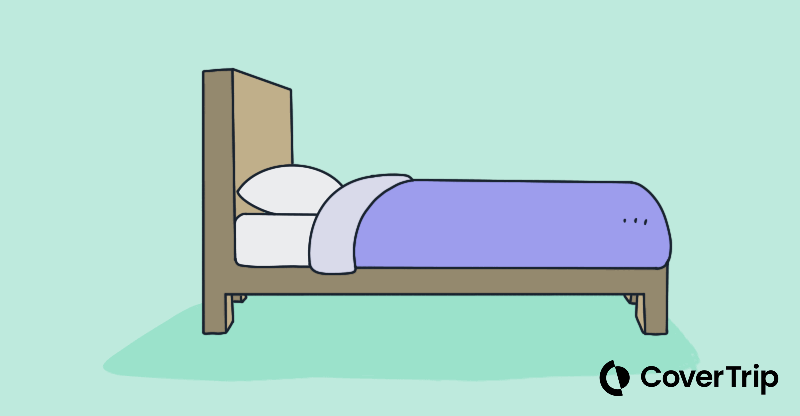5 Steps to avoid bed bugs when you travel
2 November 2023
When the deputy mayor of Paris, Emmanuel Grégoire, recently announced “No one is safe” on French TV, he was right. No one and nowhere is safe from bed bugs because they’re everywhere.
The extent of the current outbreak in Paris isn’t entirely clear yet, but the news reports, social videos, and memes swirling around are definitely making travelers concerned.
Itchy welts and tiny bite marks are the signs of bed bugs, which are flat, wingless urban insects that live off human blood. They’re small too—typically the size of an apple seed. Bed bugs locate their victims by sensing the carbon dioxide of our breath and body heat, much like mosquitos. They’re called bed bugs because they bite most often at night while the person is sleeping.
Over the past two decades, there’s been a global resurgence of bed bugs according to a scientific review published earlier this year. With the pandemic waning, and people traveling more than ever, bed bugs are back and they’re worse than ever (see the horror story of bedbugs in Airbnbs).
Here’s your step-by-step checklist to avoid sleeping in or bringing home a bed bug infestation when you travel.

1. Inspect your sleeping place
One of the easiest ways to determine whether a space is contaminated with bedbugs is by looking for reddish-brown blood stains, which is poop left behind by the bugs. ![]()
When you arrive at your hotel or vacation rental, take the first few minutes to carefully inspect the mattress and other furniture like this:
- Lift the sheets to check for red-brown colored spots.
- Brush your hand over the mattress feeling for white husk-like specks (the cast-off shells of bedbugs).
- Shine a flashlight along the mattress seams and fabric headboards where the bugs can hide.
- Examine the walls for rust-colored spots if there is wallpaper too.
- Flip up the chair cushions to inspect for signs.
Bed bugs spread from house to house, apartment to apartment, room to room easily. Even places that are super clean can have bed bugs, so don’t assume that cleanliness is a guarantee.
2. Don’t unpack
To keep the bugs from hitch-hiking home with you:
- Never put your suitcase on the bed. Instead, put it in the shower while you inspect and on a luggage rack afterward.
- Don’t unpack your clothes and put them in the drawers.
- Live out of your suitcase and keep it off the floor and furniture.
3. Be cautious with second-hand purchases
Be wary of thrift-store or second-hand buys because they could come with tiny extras. Bed bugs can live in books, pillows, clothing, and furniture.
If you buy anything to bring home, ensure you’re not bringing home bed bugs too.
Treat the items to a few days of severe cold, or wrap them in sealed plastic bags and put them in the freezer for a few days. That should kill the bugs.
If it’s the middle of summer, leave the items outside in the sun. The heat should force the bed bugs out or kill them.
4. Treat your clothes and suitcase upon return
When you return home, take these precautions to ensure you don’t bring bed bugs into your home:
- Leave your luggage outside.
- Wash all the clothing in hot water and tumble-dry them on hot for at least 30 minutes to kill any bugs.
- Use a garment steamer to heat-treat your luggage outside. This should kill any hitch-hiking eggs.
5. Act swiftly at the hotel
If you arrive at a hotel and discover bed bugs, aggressively wash your hands, gather your things, report the problem to the management immediately, and ask to be re-booked at another hotel.
Bedbugs are notoriously difficult and expensive to eradicate, so the best thing to do is avoid them. Follow these steps and you’ll be prepared to avoid these pesky pests.
Related topics
Damian Tysdal is the founder of CoverTrip, and is a licensed agent for travel insurance (MA 1883287). He believes travel insurance should be easier to understand, and started the first travel insurance blog in 2006.
